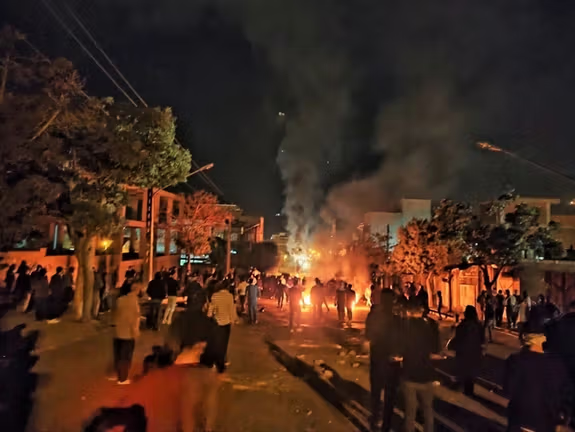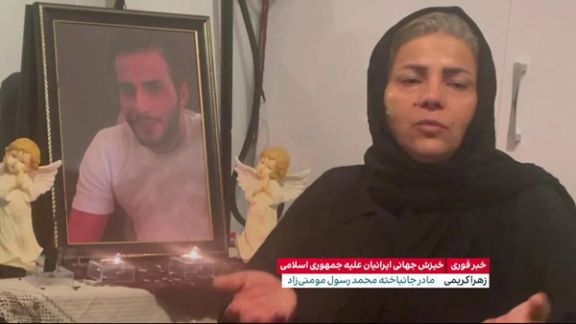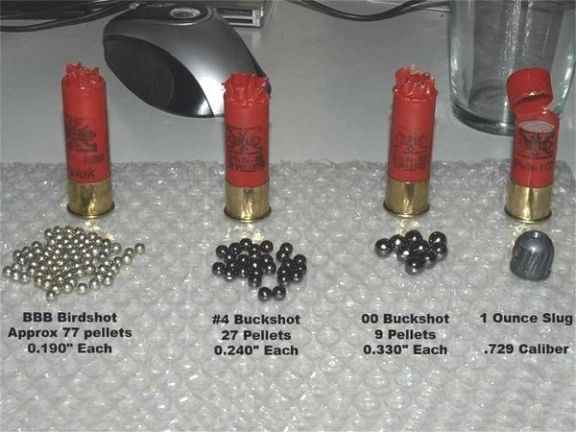At Least 244 Killed By Islamic Republic, Including 32 Children

A human rights group has said the Islamic Republic’s security forces have killed at least 244 people, including 32 children,during the current antigovernment protests across Iran.

A human rights group has said the Islamic Republic’s security forces have killed at least 244 people, including 32 children,during the current antigovernment protests across Iran.
The US-based Human Rights Activists News Agency (HRANA) saidat least 12,500 people have been also detained since the beginning of the uprising, ignited by death of 22-year-old Mahsa Amini in custody of hijab police last month.
On Thursday, a regime insider and the deputy of Basij organization said about 70 percent of people arrested during protests are less than 20 years old.
The protests first erupted in Mahsa Amini’s hometown Saqqez and capital Tehran and soon spread to all over the country and garnered support from Iranian expatriate communities around the world as well as foreign governments and officials.
Young activists in Iran have formed a protest organizing group that seems to represent a new opposition force, successfully issuing calls for demonstrations nationwide.
The group calling itself the Youth of Tehran’s Neighborhoods has mobilized thousands of protesters in several towns and cities through social media at a time of serious internet disruptions. Their latest call for protests was released on Wednesday for nationwide rallies on Saturday, October 22.
In addition to protests, strikes by oil and petrochemical workers that started last week has spread to more plants, including contract workers at the South Pars natural gas fields that produce around 70 percent of the country’s energy needs.

The story of the death of a young Iranian man at the hands of government forces has uncovered new aspects of resorting to brutal violence against protesters.
Family members of a young protester, Mohammad Rasoul Momeni Rad, who was shot to death by security forces from a one-meter distance in the northern city of Rasht on September 21, say the agents beat him severely even after he was shot.
In an exclusive interview with Iran International they said his dead body was handed over for burial to his family only on the condition they keep silent regarding the details of his death.
His brother, Amir, who was with him in the protest, told Iran International that he and his brother were running from the security forces when regime agents shot Mohammad Rasoul from a one-meter distance.
“The two officers on a motorcycle beat the two of us with a baton and punched and kicked us after the shooting,” he added.
He noted that while his brother was bleeding severely the agents continued to beat them and finally ran away on their motorbike.
The victim’s mother also said the plainclothesmen did not even allow her to see the dead body of her son at the hospital.

“Why did you kill my child with a gun from a meter away? What had he done? What should I do so that our right would not be trampled upon? I was not even allowed to see and kiss my own child,” she cried out.
Referring to the large presence of plainclothesmen at the funeral and other events, the mother said she had to remain silent during the funeral for the safety of her other children.

“I seek justice and I will not let my son die in vain,” she emphasized.
Mohammad Rasoul’s brother also added that the Forensic Medicine Organization falsely reported his brother had a liver injury. He said the bullet hit his brother in the armpit and his lower ribcage was torn apart.
According to a document received by Iran International, in this report, “being hit by high-speed metal pellets” has been announced as the cause of death.
On Thursday, a regime insider and the deputy of Basij organization said about 70 percent of people arrested during protests are less than 20 years old.
Earlier this week, a photo by a female protester showed the extent of the brutality of Khamenei agents in dealing with demonstrators.
In this photo of a woman from the city of Saqqez in the western Kurdistan province at least 150 birdshot pellets could be seen.

With respect to the size of her wounds, it seems to be a birdshot cartridge that contains 77 pellets. She was shot at least two times by a semi-automatic shotgun.
Shells containing birdshot pellets have multiple projectiles of varying sizes instead of just one slug or 9 pellets for large animals. They are devised for hunting small animals and birds, however, if fired at close targets they could kill people. Birdshot pellets can easily blind people if fired toward the face, as has happened to many Iranian protesters over the years.

A group of Iranian clerics upset with the leadership of Ali Khamenei have reportedly written to Ayatollah Ali Sistani in Iraq to come to Iran and save the situation.
The report came in a tweet from Tavaana, an Iranian NGO focusing on civic education and civil society capacity building based abroad. Iran International cannot independently verify the accuracy of the report.
Nationwide antigovernment protests have been going on for five weeks in Iran, driven by the young generation who reject the Islamic Republic and label Khamenei as a dictator.
Ayatollah Sistani is believed to be the highest-ranking Shiite cleric, whose claim to religious leadership supersedes that of Supreme Leader Ali Khamenei, who became Iran’s ruler without having sufficient religious credentials.
Sistani, who is 92 years old, rarely appears in photos but holds a large measure of influence over Iraqi politics, although he uses that power sparingly. Most Iraqis are Shiites and respect Sistani’s wishes.
The brief report by Tavaana does not name the clerics who allegedly wrote to Sistani, although it says they are clergymen from Qom, Iran’s Shia religious center. Any cleric daring to take such a step would face the danger of persecution by the Iranian government, tightly controlled by Khamenei and his hardliner supporters.
However, another unsigned statement was published three weeks ago, allegedly by clerics, who said Khamenei was never fit to be Supreme Leader and many of his officials are unqualified to be in the government.

Canada is imposing more punitive measures on Iranian officials and entities linked to the regime’s propaganda machine and those behind the Islamic Republic’s torture of detainees.
Ottawa’s new set of sanctions target six people and four entities, including the Fars News Agency that is affiliated with the Revolutionary Guard (IRGC), and the Guardian Council, which blocks electoral candidates who are not subservient to the regime.
The list also includes the Assembly of Experts – the body empowered to appoint the Supreme Leader of Iran -- and the Expediency Discernment Council, whose power lies in its advisory role to the Supreme Leader who chooses its members every five years.
Canada is also listing Iran’s deputy interior minister and a commander of the Revolutionary Guard for their roles in the violent crackdowns on protesters.
With the new additions, Canada has sanctioned 89 Iranian individuals and 177 entities.
On October 13, Ottawa imposed sanctions against 17 Iranian individuals and three entities that have participated in or enabled gross human rights violations. Former Iranian Foreign Minister Javad Zarif was in the new list as well as former prosecutor Saeed Mortazavi, Khamenei's representative in Kayhan Hossein Shariatmadari, former president Hassan Rouhani's defense minister Amir Hatami, the current state broadcaster chief Peyman Jebelli and former parliament speaker Ali Larijani.
Earlier in October, Canada finally announced sanctions against IRGC, permanently banning over 10,000 of its officers from entering Canada.
International reactions to Iran’s crackdown on ongoing popular protests are growing, with more and more countries condemning Tehran’s behavior, summoning envoys, or adopting resolutions.

Mohsen Mandegari, a seasoned Iranian journalist has warned top officials in Iran that the country's youth driving the protests “will not tolerate humiliation."
He added that "There is only a brief window of opportunity for the government to control the ongoing uprising, and If the government refuses to listen to them it will face an uncertain and disappointing future."
In his interview with the reformist daily Mostaghel [Independent], Mandegari, like many other Iranian pundits, reminded the government that "Even if the current wave of protests in Iran recedes temporarily, it will flare up again at another time like a fire under the ashes."
Explaining the structure of uprising, Mandegari said: "This is a movement which is born and spread in a web of social networks. Unlike previous uprisings and revolutions, it has a horizontal structure which reduces the need to a strong leadership."
He said that it would be simplistic to think that this movement is about hijab. The story of Mahsa Amini, the young woman who died in the custody of Iran's notorious morality police was simply a trigger for the movement, and not its cause. "This movement is the outcome of an accumulated anger caused by poverty, as well as organized discrimination and humiliation. The number of Iranians living under the poverty line has redoubled during the past three years so that more than 70 percent of Iranians are currently living under the poverty line," Mandegari said.

He added that the gap between the people and state officials has never been wider. The people feel that the officials see them as second grade citizens who are constantly ignored. Meanwhile, recent political developments such as the 2020 Majles election and 2021 Presidential election led people to believe that it is no longer possible to bring about any change in Iran through ballot boxes. This led to a deep disappointment.
In another development, Ahmad Bokharaei, the head of the Iranian Sociological Society told Rouydad24 new website that protesters are not coming into the streets just to reject government’s policy of forced hijab. There is always a web of issues that drives Iran’s protest movements.
The sociologist, cautious in how he framed his argument, seemed to be referring to both economic dissatisfaction as well as to the people’s frustration with lack of social freedoms. Bokharaei also attributed the current protests to the government's inefficacy in various areas. The combination of economic crisis, corruption, mismanagement and draconian laws together have exhausted people’s patience.
Bokharaei added that "Those who reduce the uprising to the issue of hijab, have political interest in saying so. When you look at the people in the streets of the affluent Valiasr Avenue in Tehran or low-income Iranians living in Eslam Shahr or Shahryar you will notice that as you move toward the margins of the big city you will find out that the economic reason for revolt is more prominent."
However, Bokharaei probably deliberately ignored violations of human rights by the Iranian government as one of the causes of the ongoing uprising. Another reason, as pointed out by some media outlets such as Aftab News, is that while Iranian officials for years praised the youth and school children of the 1970s for taking part in the 1979 revolution in Iran, they now hypocritically look down at youngsters and say school children should not take to the streets in protest as they are too young to understand what is good and what is bad for society.

The father of Mahsa Amini, the young woman whose death in hijab police custody sparked the current protests in Iran, says authorities tried to force him into giving interviews to Iran's state broadcaster.
Amjad Amini said in an interview on Wednesday that he and his brother-in-law were threatened by authorities to give interviews to support the narrative of the Islamic Republic about the death of Mahsa, who received fatal blows to her head while in custody..
"Islamic Republic’s state broadcaster was the last media that contacted me, and I told them frankly that I will not give and interview to them under any circumstances; Three weeks later, they called me and expected me to speak to them. I asked them about the reason to interview me,” he said.
"I did not allow them to speak to tell me their demands," he said.
He said he asked about the reason for her daughter's death, but the authorities told him that it is none of his business and they will announce whatever is in the interest of the Islamic Republic.
Iran International obtained Amini’s brain CT scan from hospital sources in September that shows serious injuries to her skull. Hospital staff also confirmed that she was in a coma upon arrival. Fars news agency affiliated with the Revolutionary Guard confirmed that the CT scan belonged to Amini. Moreover, her photos in the hospital show her bleeding from the right ear, a definite sign of brain injury.